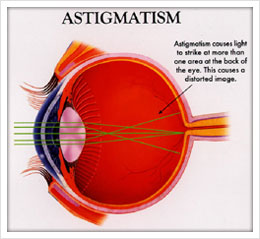
Hi,
I have a question regarding what is a refractive error. I was not able to find anything about it anywhere; can anyone help me in explaining this?
Thank you.
Read About What Is A Refractive Error In Brief.

A refractive error usually means that the shape of a human’s eye is unable to bend light correctly, which results in a blurred image. The three types of refractive errors are myopia, hypermetropia and presbyopia.
People having high degrees of myopia possess a greater risk of retinal detachment which may need surgical repair.

Read About What Is A Refractive Error In Brief.

Refractive error means the shape or form of your eye doesn’t bend or curve light correctly which results in blurring of images. There are four main types of refractive errors: myopia or nearsightedness, hyperopia or farsightedness, presbyopia or loss of near vision with age, and astigmatism.
Symptoms when you have refractive error include blurred vision, difficulty seeing up close or reading, and esotropia or the crossing of the eyes in children. Overuse of the eyes doesn’t worsen refractive error or does not cause refractive error. Myopia or nearsightedness is normally inherited and frequently discovered during childhood. It normally progresses during the teenage years when the body is growing fast.
Hyperopia or farsightedness can also be inherited. This is normally found on children and may lessen when they become adult. In more advanced cases, there is blurring in the vision in all distances. Presbyopia normally happens after age 40 when the lens of the eye becomes more rigid and doesn’t flex easily.
This results in losing of the focusing ability of the eye and it becomes harder to read at close range. Astigmatism normally happens when the cornea, the front surface of the eye, has an asymmetric curvature. The cornea is normally smooth and equally curved in all directions and the light entering the cornea is focused equally in all directions.
When you have astigmatism, the front surface of the cornea is curved more in one direction than the other. This normally causes blurred vision at all distances.














